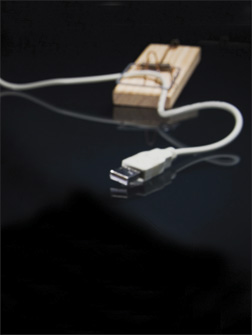 Wisconsin Lawyer
Wisconsin Lawyer
Vol. 84, No. 6, June 2011

On Jan. 1, 2011, changes to the Wisconsin Rules of Civil Procedure addressing electronic discovery took effect. These changes mirror, to a large extent, the 2006 amendments to the Federal Rules of Civil Procedure. Accordingly, organizations can and should look to emerging federal case law concerning the amended federal rules as a preview of issues that may arise in Wisconsin state courts in the near future. This article briefly highlights key changes to the Wisconsin Rules of Civil Procedure. Next, the article uses a noteworthy 2010 case, Pension Committee of the University of Montreal Pension Plan v. Banc of America Securities LLC, to demonstrate some of the potential traps associated with preservation, production, and spoliation of electronic evidence. Finally, the article discusses how in-house and outside counsel can leverage technology to help avoid the pitfalls and meet compliance goals in a world of dramatically expanding data volumes and complexity.
Changes to the Wisconsin Rules
The new and amended civil procedure provisions, many of which appear in Wis. Stat. chapter 804, originated in proposals developed by the Wisconsin Judicial Council’s Evidence and Civil Procedure Committee. In April 2009, the Judicial Council submitted a petition to the Wisconsin Supreme Court, which, after extensive consideration, voted 4–3 to make some of the proposed changes. In brief, the most significant provisions concern the following matters:
Scheduling Order. The scheduling order may address the need for discovery of electronically stored information (ESI), which focuses early attention on electronic discovery issues.
Discovery Conference. The parties must confer regarding discovery of ESI (required meet and confer) unless the court excuses them from doing so. The parties must discuss the scope of electronic discovery, the preservation of ESI, the format of production, and the costs of proposed discovery (including the extent to which such costs shall be limited).
Business Records. Parties may produce or allow access to business records in response to an interrogatory.
Format of Production. The requesting party may specify the “form” of production of ESI. If no form is specified, information must be produced in the form in which it is ordinarily maintained or in a “reasonably usable form.”
Safe Harbor. A “safe-harbor” provision protects a party who destroys information in good faith according to a routine records-retention policy.
Subpoena. The rule protects parties from the unreasonable burden of responding to subpoenas asking for ESI by enabling the producing party to produce information in the form in which it is ordinarily maintained or in a reasonably usable form and also by permitting testing or sampling of the information instead of inspection of copying.
A Platform Set by Pension Committee
There have not yet been any published Wisconsin cases concerning the ESI-related civil procedure rules. Attorneys seeking guidance on avoiding electronic discovery pitfalls can consult federal case law arising from the 2006 amendments to the Federal Rules of Civil Procedure. A notable example is the 2010 decision in Pension Committee of the University of Montreal Pension Plan v. Banc of America Securities LLC. In Pension Committee, a group of investors sought to recover losses of $550 million stemming from the liquidation of two hedge funds in which they held shares. At least 13 of these plaintiffs encountered a significant detour on the road to recovery, in the form of discovery sanctions for spoliation of information. Judge Shira Scheindlin (the presiding judge in the landmark Zubulake series of legal-hold decisions) found that several plaintiffs had spoliated relevant evidence by engaging in conduct ranging from negligence to gross negligence.1 The court imposed sanctions including additional (limited) discovery, an award of fees and, for some, an adverse-inference jury instruction.
The opinion makes clear that the court used hindsight to answer questions regarding preservation decisions and actions. Judge Scheindlin described this as “a judgment call,” under which the court employed “‘a gut reaction’ based on years of experience as to whether a litigant has complied with its discovery obligations and how hard it worked to comply.” Although the Pension Committee court tried to identify contours of acceptable and unacceptable conduct, the opinion also acknowledged that “[e]ach case will turn on its own facts and the varieties of efforts and failures is infinite” and explicitly recognized that “[c]ourts cannot and do not expect that any party can meet a standard of perfection.”2
 Jennifer J. Kehoe, U.W. 1996, practices with Redgrave LLP, Minneapolis. She helps clients create guidelines for identifying, preserving, collecting, producing, and using ESI in both everyday business matters and complex litigation. She can be reached at jkehoe@redgravellp.com.
Jennifer J. Kehoe, U.W. 1996, practices with Redgrave LLP, Minneapolis. She helps clients create guidelines for identifying, preserving, collecting, producing, and using ESI in both everyday business matters and complex litigation. She can be reached at jkehoe@redgravellp.com.
 Christian N. Rummelhoff, Minnesota 2007, also is with Redgrave LLP. He helps clients develop records and information management programs and advises them regarding discovery issues raised by social media, Web content, and other developing technology resources. Reach him at
Christian N. Rummelhoff, Minnesota 2007, also is with Redgrave LLP. He helps clients develop records and information management programs and advises them regarding discovery issues raised by social media, Web content, and other developing technology resources. Reach him at
crummelhoff@redgravellp.com.
Pension Committee has lessons to teach in three key areas:
Legal Holds. The court found due diligence missing in the efforts of certain plaintiffs. Specifically, the court found that failing to issue a written legal-hold notice per se constitutes gross negligence because it is likely to result in the destruction of relevant information.3 Pension Committee and other cases and secondary authorities make clear that organizations must have a defensible and effective legal-hold process and, if a written legal hold was not issued, there should be a demonstrably defensible reason why (for example, the targets were the subject of an internal investigation and notice might lead to the destruction of information, the case falls within the confines of other legal holds that are already in place, or all data subject to preservation has already been collected).
Custodians. The Pension Committee decision addressed the loss or destruction of evidence resulting from a failure to conduct a proper and timely collection of responsive documents and ESI. The court noted that “the failure to collect records – either paper or electronic – from key players constitutes gross negligence or willfulness.” For those employees who are not “key players” to the litigation (that is, those that “may have had only a passing encounter with the issues in the litigation”), the failure to collect records “likely constitutes negligence as opposed to a higher degree of culpability.”
Backup Tapes. The court also noted that the failure to preserve certain backup tapes containing data from key players “constitutes gross negligence or willfulness.”4 The court, however, made clear the following:
“I am not requiring that all backup tapes must be preserved. Rather, if such tapes are the sole source of relevant information (e.g., the active files of key players are no longer available), then such backup tapes should be segregated and preserved. When accessible data satisfies the requirement to search for and produce relevant information, there is no need to save or search backup tapes. See Fed. R. Civ. P. 26(b)(2)(B).”5
Discovery Actions that Can Be Considered Gross Negligence. Again, the court recognized that the findings and conclusions in any given case will be highly fact specific, highlighting the need for counsel to be familiar with their client’s information systems and the information at issue in the case. However, Judge Scheindlin did set forth a useful list of certain discovery actions that, in her view, are a “failure to adhere to contemporary standards and can be considered gross negligence”:
- a failure to issue a written legal hold;
- a failure to identify all the key players and to ensure that their electronic and paper records are preserved;
- for former employees, a failure to cease deletion of e-mail and other records that remain in the responding party’s possession, custody, or control;
- a failure to preserve backup tapes when the tapes are the sole source of relevant information; and
- a failure to preserve backup tapes that relate to key players, when the relevant information regarding those key players is not available from readily accessible sources.
The Pension Committee case is just one of many cases decided since the 2006 Federal Rules amendments took effect that illustrate the decreasing patience of the judiciary regarding litigants’ failure to take appropriate steps to implement written legal holds, collect information, and make accurate and timely disclosures regarding productions. It also reminds attorneys and litigants of the severe consequences that can attend such failures, including the drastic sanction of an adverse-inference instruction, even in the absence of a finding of purposeful bad-faith conduct. Of course, the standard for imposition of sanctions varies from jurisdiction to jurisdiction, and even other courts in the Southern District of New York have disagreed with aspects of the Pension Committee opinion,6 but the opinion does illustrate that courts are willing to respond strongly when parties fail to comply with discovery rules.
Recent Articles Focus on E-Discovery Issues
Issues surrounding Wisconsin’s new e-discovery rules have been the focus of several recent Wisconsin Lawyer articles, including the following:
Timothy D. Edwards, “Electronically Stored Information: Know When to Hold It and When to Hit Delete,” Practice Tips, 84 Wis. Law. 27 (May 2011).
Hon. Richard J. Sankovitz, Jay E. Grenig & William C. Gleisner III, “Panning for Gold: Social Networking’s Impact on E-Discovery,” 84 Wis. Law. 12 (Feb. 2011).
Timothy D. Edwards & Daniel P. McAlvanah, “Spoliation of Electronic Evidence,” 83 Wis. Law 6 (Nov. 2010).
Hon. Richard J. Sankovitz, Jay E. Grenig, & William C. Gleisner III, “New Electronic Discovery Rules: What You Need to Know,” 83 Wis. Law. 8 (July 2010).
Bruce A. Olson, “Engage the Jury: Presenting Electronic and Computer Forensics Evidence at Trial,” Technology, 83 Wis. Law. 22 (Feb. 2010).
Timothy D. Edwards & Matthew Stippich, “Proposed Rules for Electronic Discovery,” 82 Wis. Law. 10 (Dec. 2009).
Supreme Court Order 09-01, Discovery of Electronically Stored Information, petition of Judicial Council, 82 Wis. Law. 33 (Dec. 2009).
The Pension Committee opinion should be a clear warning that sending out a hold notice is not in itself sufficient, and relying solely on custodians to select and collect information for the litigation is also not sufficient. Parties must have a process in which preservation directives are effectively executed, the pertinent custodians receive appropriate direction and oversight in complying with directions, and information is collected from key players and other people to ensure its preservation.
Using Technology to Avoid E-Discovery Pitfalls
A variety of technology tools are available to help clients and their in-house and outside counsel prepare for the possibility of litigation and comply with electronic discovery demands in situations in which lawsuits are brought.
Electronic Legal Holds. Many specialty systems are designed to assist organizations with managing the legal-hold process. High-end (and high-priced) systems do everything from integrating with human resources (HR) systems (to identify custodians) to pinpointing information associated with the custodians (such as email, share drives, and other data stores) and signaling to preserve that data. Other legal-hold systems focus on the issuance and tracking of the hold notice itself (that is, who received it, was receipt acknowledged, and what follow-up steps were taken). The high-end systems can provide value to a company with a heavy litigation profile, but acquiring and configuring these systems takes time and effort – and if these systems are not in place from the beginning, it can be difficult to implement such a solution for a case already in progress.
Email remains a favored method to distribute legal-hold notices but modern email systems offer more than just a means to send a message. Emailed legal-hold notices can be integrated into an automated workflow process that can track each recipient’s receipt and acknowledgement of a hold, allowing case teams to follow up with nonresponders. A workflow process can also be used to push customized questionnaires to refine the custodian list or identify relevant data repositories. Depending on the organization’s infrastructure, technologies other than email, such as specially purposed SharePoint sites, can be used to transmit, track, and manage legal holds.
Identifying “Other” Players. It often is challenging to identify potential custodians other than key players. Certain technology resources can help. For example, HR reporting systems are a good place to start when identifying who was in a certain role or department at a given time. However, the information these systems provide usually does not identify who worked on a specific project or product team.
Companies are increasingly implementing collaborative technologies, such as SharePoint team sites, eRooms, and internal social networking capabilities, that allow project teams to communicate and coordinate. Understanding who had access to various team or product resource sites may be helpful in identifying potential custodians involved in a team or project. Further, resources such as document-management systems that log the users associated with a document (that is, authors, contributors, and viewers) can also be useful in ascertaining potential custodians.
Evolving Backup Technology. Backup tapes, at issue in Pension Committee, are still the primary low-cost disaster-recovery media, but the backup landscape is changing and counsel must understand the backup technologies their clients possess and how this data may be viewed in discovery.
Specialty vendors have developed technologies allowing backup tapes to be indexed and searched without being restored, depending on the tape and on the data. This technology has the potential to (somewhat) lower the cost of accessing backup tapes when such measures are appropriate.
However, backup systems themselves are growing more advanced and may manage backed-up data at the file level, moving data across tapes rather than creating a discrete series of tapes for each backup. Some technologies replace tapes. Many companies guarantee system continuity by creating mirrors, or near real-time system duplicates, rather than by creating series of backup copies. Mirrors are typically created on (more expensive) hard drives, and so suspending the routine overwriting of data may not be possible without entirely suspending the operation of the mirror and thus eliminating the disaster-recovery protection.
Routine Deletion. The routine deletion of data is not limited to the destruction of backup tapes. Many systems overwrite data once it is no longer needed. Increasingly, systems incorporate features designed to help manage the retention of records and information – sometimes by taking automatic action to modify or delete data and documents. For example, many corporate email systems have mailbox size limits or automatically delete messages after a certain period of time. Likewise, document repositories or file shares may delete information that has not been accessed for a specified time.
Unfortunately, there is no technological tool that can identify and suspend automatic processes that modify or delete information across the many systems where they might occur, but as Pension Committee illustrates, understanding (and, when appropriate, suspending) these processes is critical. Counsel must find out which systems leverage these processes and determine whether they can be suspended and the effect of such a suspension on the routine operation of the system.
Conclusion
The ability to store information electronically has saved businesses and individuals time, money, and space, but it also presents challenges, especially after lawsuits are filed. Attorneys navigating litigation with Wisconsin’s amended civil procedure rules can look to the map based on the 2006 amendments to the Federal Rules and related cases. The evolving federal jurisprudence, such as the Pension Committee opinion, provides guidance and warning to Wisconsin lawyers regarding the need to understand both the law governing electronic discovery and the specifics of their clients’ information systems.
Fortunately, existing and evolving technology tools can help parties and counsel avoid potential traps and meet their ESI preservation and discovery obligations. In-house and outside counsel should work together to create efficient litigation procedures in accordance with the new rules that will allow their clients to leverage technology based on the particular circumstances. In addition, Wisconsin’s requirement that parties meet and confer early in the process affords parties and counsel the opportunity to establish expectations and to determine what sorts of tools will be most useful in a particular matter.
In the end, technology tools are only as good as their users. Technology can be of tremendous assistance in the discovery process, but it is never a substitute for involved and competent counsel.
Endnotes
1 Pension Committee of the Univ. of Montreal Pension Plan v. Banc of Am. Secs. LLC, 685 F. Supp. 2d 456 (S.D.N.Y. 2010).
2 Id. at 461.
3 Id. at 475.
4 Id. at 465.
5 Id. at 480 n.99.
6 See Orbit One Communications Inc. v. Numerex Corp., 271 F.R.D. 429 (S.D.N.Y. 2010).
Wisconsin Lawyer
